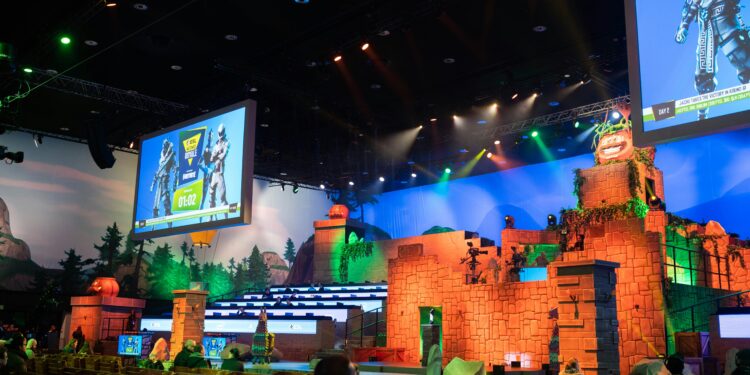Metaverse Gaming Economies: The Rise and Regulation of Virtual Labor

The digital frontier is rapidly expanding, transforming virtual worlds from playful interactions into a new economy and legitimate source of income for millions. From the blocky landscapes of Roblox to the battle arenas of Fortnite and the decentralized realms of Web3, metaverse gaming is creating a buzz around the term “virtual labor”.
This rapidly evolving environment of building, creating, managing, and monetizing within dynamic digital ecosystems is becoming a vital creator economy, with significant financial implications, especially for a growing youth demographic.
This article delves into how these popular gaming platforms are fostering new forms of employment, examines the global patterns shaping these user-generated content (UGC) economies and the broader digital creative landscape, and evaluates the critical need for regulatory responses, safety measures, and a clear vision for the future of virtual work.
1. The New Frontier of Labor and Monetization
The concept of earning a living within a virtual world might sound futuristic, but it’s already a well-established reality in several prominent gaming metaverses:
- Roblox: More than just a game, Roblox is a platform where users can create their own “experiences” (games) using Roblox Studio. Developers, many of whom are teenagers, earn Robux (the platform’s virtual currency) when players spend money in their games. This Robux can then be converted into real-world currency through the Developer Exchange program. This has fostered a vibrant developer economy, a significant part of the overall digital content ecosystem, where individuals hone skills in game design, coding, 3D modeling, and even marketing.
- Fortnite (Creative & UEFN): Epic Games has expanded Fortnite beyond its battle royale origins with Creative mode and the Unreal Editor for Fortnite (UEFN). This empowers “island creators” to build elaborate games and experiences. Through the Creator Economy 2.0 model, creators can earn real money based on player engagement and time spent in their islands. This incentivizes a diverse range of virtual labor, from complex game development to aesthetic design and social interaction, further bolstering digital content creation within the gaming sphere.
- Web3 Games (Play-to-Earn & NFTs): Blockchain-based games, often referred to as “Web3” or “Play-to-Earn (P2E)” titles (e.g., Axie Infinity, Decentraland, The Sandbox), take virtual labor to a new level. Players can earn cryptocurrency or non-fungible tokens (NFTs) by playing, completing tasks, or contributing to the game’s ecosystem. These digital assets are truly owned by the player and can be traded on open marketplaces, creating diverse income streams from:
- “Scholars” who play games using assets owned by others in exchange for a share of earnings.
- Digital artists creating NFTs (skins, items, virtual land).
- Virtual land developers building experiences on purchased metaverse plots.
- Community managers fostering engagement within game guilds.
These platforms have transformed casual play into legitimate avenues for earning, leading to specialized virtual jobs like asset creation, modding, virtual event management, streaming, and professional competitive gaming, all contributing to this burgeoning digital labor market.
Read Also: Unlock the Gaming Goldmine: A Step-by-Step Guide to Game Affiliate Marketing
2. Global Patterns & Youth Engagement
The rise of metaverse gaming economies is a truly global phenomenon, with distinct patterns emerging, particularly among younger demographics, shaping the future of digital creativity and monetization.
- Youth as Creators and Earners: A significant portion of creators and earners on platforms like Roblox are under 18. These young individuals are not just consumers, but also entrepreneurs, learning valuable skills in coding, design, economics, and community building at an early age within this digital content space.
- Low Barrier to Entry: Many platforms offer intuitive tools (like Roblox Studio) that lower the technical barrier for creation, enabling a wider demographic to participate in content generation and enter this dynamic economic model.
- Accessibility and Economic Opportunity: In developing nations, P2E games have become a critical source of income, often exceeding local minimum wages. Players in regions with limited traditional job opportunities are actively engaging in virtual labor to support their families, creating a new form of digital migration and contributing significantly to the global digital economy.
- Digital Entrepreneurship: The appeal of being one’s own boss, setting flexible hours, and earning directly from creative output is a powerful driver, especially for youth seeking alternatives to traditional employment paths within this emerging digital marketplace.
3. Regulatory Responses & Challenges
The rapid expansion of metaverse gaming economies presents unprecedented regulatory challenges, as existing legal frameworks struggle to keep pace with virtual realities, and specifically, the nuances of digital content creation and labor.
- Defining “Work” in the Metaverse: A fundamental challenge is whether virtual activities constitute “employment” in a legal sense. Are Roblox developers employees or independent contractors within the creator economy? Do P2E “scholars” have labor rights? The answers have profound implications for minimum wage, working conditions, and benefits.
- Taxation: Monetized virtual earnings, whether Robux converted to USD or cryptocurrency earned in P2E games, are typically subject to taxation. However, enforcement and clarity on how to report and pay taxes on virtual income vary widely across jurisdictions and often remain ambiguous for users and regulators alike in the context of the creator economy.
- Consumer Protection vs. Labor Law: When users invest real money into virtual assets (NFTs, virtual land) or pay for in-game services, are they consumers or workers? This distinction impacts which laws apply, from consumer protection for virtual goods to labor laws for services rendered, especially concerning the gig-like nature of the creator economy.
- Child Labor Concerns: Given the high percentage of youth participants, regulating virtual labor to prevent child exploitation, ensure fair compensation, and protect against excessive “work” hours becomes a critical, yet complex, issue within the creator economy. Current labor laws are designed for physical workplaces and often don’t translate directly to digital environments.
- Jurisdictional Complexity: The borderless nature of the metaverse means that virtual labor can occur across multiple countries simultaneously, complicating which national laws apply to a transaction or employment dispute in the global creator economy.
Governments and international bodies are just beginning to grapple with these complexities, with early responses ranging from cautious observation to attempts at applying existing financial regulations to digital assets.
4. Safety Concerns in Virtual Workspaces
Beyond legal ambiguities, the unregulated nature of virtual labor also raises significant safety concerns for participants in the creator economy:
- Exploitation and Predatory Models: The lack of formal labor protections can lead to exploitation, where virtual workers (especially those in developing nations or minors) might be underpaid, work excessive hours, or fall victim to predatory “guild” models that take a disproportionate share of earnings from the creator economy.
- Scams and Fraud: The nascent Web3 space, in particular, has seen numerous instances of scams, rug pulls, and fraudulent schemes, where virtual assets lose all value or promised earnings never materialize, leaving participants in the creator economy with significant financial losses.
- Mental Health and Well-being: The blurred lines between “play” and “work” can contribute to gaming addiction, burnout, and mental health issues, especially when livelihood depends on continuous engagement within the creator economy. The isolation of virtual work can also exacerbate these concerns.
- Privacy and Data Security: Platforms collect vast amounts of user data, including financial transactions and behavioral patterns. Ensuring the security and privacy of this data, especially for minors, is paramount but challenging within the digital creator economy.
- Content Moderation and Intellectual Property: Protecting creators’ intellectual property and ensuring safe, appropriate content generation within UGC economies requires robust moderation, which is difficult to scale for the ever-expanding creator economy.
5. The Future of Virtual Employment
Despite the formidable challenges, the trajectory of metaverse gaming economies points towards continued growth and integration into the global workforce, profoundly impacting the future of the creator economy:
- Growing Market Size: Projections for the metaverse market indicate exponential growth, fueled by increasing user adoption and investment. This will naturally expand the demand for virtual labor and the overall creator economy.
- Mainstreaming of Virtual Roles: As digital skills become more universally valued, roles honed in metaverses (such as 3D design, community management, and virtual economy analytics) will likely translate directly into more traditional employment sectors, bridging the gap between the virtual and real-world economies.
- Skill Development: Metaverse platforms are inadvertently becoming training grounds for future digital professionals, equipping youth with marketable skills in emerging technologies, preparing them for the demands of the modern creator economy.
- Adaptive Frameworks: The ongoing dialogue between policymakers, platform developers, and user communities will slowly lead to the development of adaptive legal and ethical frameworks. This might involve new classifications of “digital worker,” industry self-regulation, or international agreements to protect virtual laborers in the evolving creator economy.
A New Era for Work: What’s Next for the Creator Economy
Metaverse gaming economies are not just a fleeting trend. They represent a fundamental shift in how we perceive and engage with labor, particularly within the burgeoning creator economy.
While offering unprecedented opportunities for monetization, creativity, and skill development, especially for youth across the globe, they also shine a spotlight on critical regulatory gaps and safety concerns.
The challenge for governments, platforms, and society at large will be to foster innovation and opportunity in these virtual realms while simultaneously establishing robust protections to ensure fair play, prevent exploitation, and build truly equitable digital futures for all participants in this dynamic creator economy.
The rise of virtual labor is a powerful reminder that as our digital worlds expand, so too must our understanding of work, rights, and responsibility.








